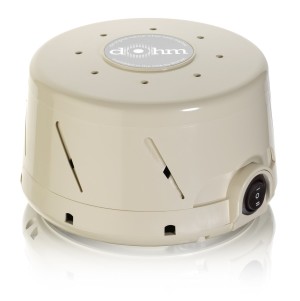Modern society is filled with an unprecedented level of noise. Smartphone notifications, office chatter, urban clamor – these constant stimuli disrupt our concentration, increase stress, and hinder quality sleep. In this environment, while there’s a growing desire for silence, a seemingly contradictory solution involving “sound” is gaining attention. The key player in this solution is “white noise”.
White noise refers to a constant sound that contains all audible frequencies in equal measure. Examples include the sound of a shower, a fan, or TV static. At first glance, adding more sound might seem counterproductive for people already struggling with noise. However, the unique characteristics of white noise can actually protect our brains and have a calming effect on our minds.
Why is white noise attracting particular attention in modern society? It’s because our surroundings are rapidly changing, constantly exposing us to new stimuli. The proliferation of open offices, the ubiquity of digital devices, and advancing urbanization – these factors disperse our attention, making it difficult to achieve deep concentration or quality sleep. White noise is gaining prominence as one solution to these issues.

Urban noise: The growing demand for white noise
White noise reduces excessive stimulation to the brain by homogenizing irregular and unpredictable environmental sounds. This is expected to have multiple benefits, including improved concentration, better sleep quality, and stress reduction. The importance of white noise is increasing, especially in today’s world where securing a “quiet environment” is becoming more challenging due to the rise of remote work and the progression towards a 24-hour society.
In this article, we will explore in detail how white noise affects the brain and how it can improve our daily lives. We’ll cover everything from the basic mechanisms of white noise to effective usage methods and the latest research findings. We’ll provide answers, based on scientific insights and practical advice, on how to incorporate and utilize white noise as a new tool for surviving in our stress-filled society.
What is White Noise?
White noise refers to a constant sound that contains all audible frequencies in equal measure. Examples include the sound of a shower, a fan, or TV static. At first glance, adding more sound might seem counterproductive for people already struggling with noise. However, the unique characteristics of white noise can actually protect our brains and have a calming effect on our minds.

White noise frequency spectrum: All audible frequencies are equally included. Warrakkk, CC BY-SA 3.0
Why is White Noise Gaining Attention?
Why is white noise attracting particular attention in modern society? It’s because our surroundings are rapidly changing, constantly exposing us to new stimuli. The proliferation of open offices, the ubiquity of digital devices, and advancing urbanization – these factors disperse our attention, making it difficult to achieve deep concentration or quality sleep. White noise is gaining prominence as one solution to these issues.
The Basic Mechanism of White Noise
Definition and Characteristics of White Noise
The term “white noise” is derived from an analogy to white light, which contains all wavelengths of visible light in equal proportions. Acoustically, it refers to a state where all audible frequencies from 20Hz to 20,000Hz are contained with equal energy. This characteristic makes white noise perceived as a constant and stable sound.
The Fundamental Impact of White Noise on the Brain
The effect of white noise on the brain is primarily due to a mechanism called the “masking effect”. This effect refers to the phenomenon where one sound covers up another. White noise masks irregular and sudden ambient sounds with a uniform background noise, thereby reducing stimulation to the brain.
The Relationship Between Sound and the Brain
The human brain is constantly processing surrounding sounds. It’s particularly programmed to pay attention to new sounds or sudden changes in sound. This is part of our survival instinct, crucial for quickly detecting potential dangers. However, in modern society, the excessive functioning of this mechanism can lead to decreased concentration and increased stress.
Positive Effects of White Noise on the Brain

Brain wave measurement: Studying the effects of white noise on brain waves. Petter Kallioinen, CC BY-SA 3.0
Improved Concentration
White noise homogenizes irregular surrounding sounds, reducing the frequency at which the brain responds to external stimuli. This makes it easier to concentrate on specific tasks. It’s particularly effective when working in open offices or noisy environments. By listening to white noise, you’re less likely to be distracted by surrounding conversations or sudden noises, potentially improving work efficiency.
Improved Sleep Quality
Many people use white noise to improve sleep quality. By masking ambient sounds in the bedroom or external noise, it can create a more stable sleep environment. This is particularly effective for those bothered by urban noise or parents struggling to put their babies to sleep.
Stress and Anxiety Reduction
Constant white noise is said to suppress the activity of the sympathetic nervous system and activate the parasympathetic nervous system. This can stabilize heart rate and blood pressure, potentially lowering overall stress levels. Incorporating white noise into meditation or relaxation time can help achieve a deeper state of relaxation.
Impact on Memory and Learning Abilities
Recent studies suggest that moderate levels of white noise may have a positive effect on memory and learning abilities. In particular, there are reports that white noise contributes to improved concentration and memory in people with symptoms of Attention Deficit Hyperactivity Disorder (ADHD).
How to Utilize White Noise
Examples of White Noise Use in Daily Life
- During work: To improve concentration in the office. By playing white noise through earphones or speakers, you can block out surrounding noise and increase work efficiency.
- While studying: Useful in libraries or at home. Using it as background noise can help maintain concentration.
- During sleep: Using a white noise machine or app in the bedroom can create a stable sleep environment.
- For stress relief: Incorporating white noise into meditation or relaxation time can help achieve a deeper state of relaxation.
Tips and Precautions When Using White Noise
- Volume adjustment: It’s important for white noise to function as background sound. As excessive volume can be counterproductive, adjust it to a level that feels comfortable.
- Personalize to your preference: We recommend trying not only pure white noise but also sounds with similar characteristics like pink noise or brown noise. It’s important to find the sound that suits you best.
- Adjust usage time: Avoid continuous use for long periods and take appropriate breaks while using it.
Introduction to White Noise Tools and Apps
- Dedicated white noise machines: These devices are designed for bedrooms or workspaces and provide various types of ambient sounds.
White noise machine: A device used for improving sleep and concentration. By Karnuiloa – Own work, CC BY-SA 4.0, Link
- Smartphone apps: Many free and paid apps are available, allowing you to listen to white noise conveniently even when you’re out.
- Online streaming: Video platforms like YouTube also offer long-duration white noise sources.
White Noise and Brain Science
Effects on Brain Waves
Several interesting research results have been reported regarding the effects of white noise on brain waves. Listening to moderate levels of white noise tends to increase alpha waves (predominant during relaxed states) and decrease beta waves (predominant during tense or anxious states). This is considered one of the scientific bases for the relaxation effect of white noise.
The Relationship Between White Noise and Neuroplasticity
Neuroplasticity refers to the brain’s ability to adapt and change in response to new experiences or environments. It’s suggested that continuous use of white noise may promote the brain’s adaptive ability to improve concentration and work efficiency in specific situations. For example, by habitually using white noise as background sound while studying, learning efficiency in that sound environment may gradually improve.
Latest Research Results and Expert Opinions
Recent studies have been conducting more detailed investigations into the effects of white noise on specific cognitive functions. For instance, there are reports that moderate levels of white noise may improve short-term memory in elderly people with mild cognitive impairment.
The impact of white noise on children’s language development is also attracting attention. Some studies suggest that moderate levels of background noise may promote children’s language learning abilities.
However, opinions are divided among experts, with many emphasizing that the effects of white noise vary greatly between individuals. Further research is needed on the long-term effects on the auditory system.
Drawbacks and Limitations of White Noise
Risks of Long-term Use
There are several potential risks associated with long-term use of white noise. Continuous use at high volumes can strain the auditory system and increase the risk of hearing loss. It’s also pointed out that constantly relying on white noise may reduce the ability to adapt to natural environmental sounds.
Counterproductive for Some People
The effects of white noise vary greatly between individuals, and for some people, it can be counterproductive. Especially for those sensitive to sound or those who show hypersensitive reactions to specific frequencies, white noise may cause discomfort or irritation. Some studies have also reported cases where white noise decreased concentration in people with ADHD symptoms.
Possibility of White Noise Dependence
Daily use of white noise may lead to a state of dependence where one can’t concentrate or sleep without it. This could potentially lead to a decreased ability to adapt to natural environmental sounds in the long term.
Conclusion

Relaxation using white noise: Importance of personalized usage.
The effects of white noise on the brain are diverse, ranging from improved concentration and sleep quality to stress reduction. When used appropriately, it can be an effective tool for enhancing the quality of daily life. However, its effects vary between individuals, and long-term use comes with some risks.
Future research is expected to provide more detailed investigations into optimal usage methods of white noise tailored to individual characteristics and its long-term effects. Comparative studies with other environmental sounds (such as nature sounds or music) will also contribute to creating more effective sound environments.
To find the white noise usage that suits you best, we recommend the following approaches:
- Try various types of white noise (pure white noise, pink noise, nature sounds, etc.).
- Adjust the volume and usage time appropriately according to the situation (during work, sleep, relaxation time, etc.).
- Regularly evaluate the effects and adjust the usage method as needed.
- Pay attention to the effects of long-term use and periodically set periods to pause usage.
White noise is one tool for balancing our brains and minds in the stressful sound environment of modern society. By utilizing it wisely according to individual needs and characteristics, it can help lead to a richer and more productive daily life.



